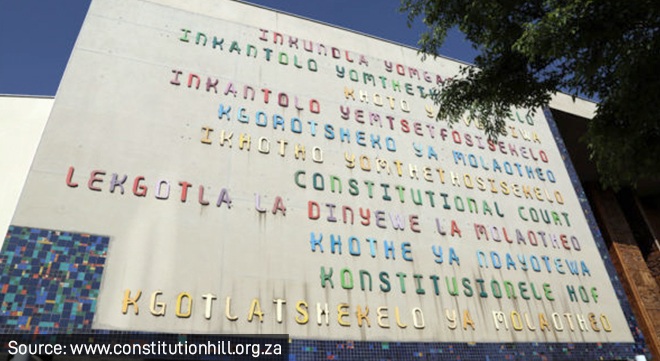The Constitutional Court this month handed down a judgment that clarifies the limitations of the conduit (or flow-through) principle to capital gains distributions in multi-tiered trust arrangements.
The judgment was the result of an appeal brought by the Thistle Trust, an inter vivos discretionary trust, against a Supreme Court of Appeal decision in favour of the South African Revenue Service (SARS).
The Thistle Trust was a beneficiary of Zenprop, which is a group of 10 vesting trusts (Tier 1 trusts).
During the 2014, 2015, and 2016 tax years, the vesting trusts realised capital gains after disposing of capital assets and distributed the proceeds to the Thistle Trust, which distributed the proceeds to its beneficiaries within the same tax years.
It did not declare the capital gains; instead, its beneficiaries declared the capital gains and paid capital gains tax (CGT).
SARS raised an assessment against the Thistle Trust for the 2014, 2015, and 2016 tax years for the capital gains it contended had accrued to the trust. SARS also imposed a 50% understatement penalty (R1.45 million) and required the trust to pay interest on the outstanding tax liability.
The Thistle Trust filed an objection, saying it was merely a conduit for the movement of gains to its beneficiaries that, in terms of the common law and the Income Tax Act (ITA), were taxable in the hands of the beneficiaries only. SARS disallowed the objection.
The trust challenged the disallowance in the Tax Court.
The Tax Court found in favour of the trust, concluding that the conduit principle applicable to dividends was equally applicable to the capital gains.
SARS appealed to the SCA, which set aside the order of the Tax Court in so far as it applied to the tax liability and held that the conduit principle did not apply beyond the Thistle Trust, which was accordingly liable for tax on the capital gains.
However, it upheld the objection of the Thistle Trust on the issue of the imposition of an understatement penalty.
The Thistle Trust applied for leave to appeal in the Constitutional Court on the issue of its tax liability. SARS conditionally applied for leave to cross-appeal on the issue of the understatement penalty.
Legal issues at stake
The case centred on whether the conduit principle in section 25B of the ITA would apply to the capital gains distributed by the Thistle Trust to its beneficiaries, or whether paragraph 80(2) of the Eighth Schedule to the ITA would apply to the distributions.
Essentially, the trust argued that the conduit principle applied to the distributions, and the capital gains were correctly taxed in the hands of the beneficiaries.
SARS disagreed and argued that paragraph 80(2) codified the conduit principle only where there was a distribution of capital gains for a trust where the trust had disposed of the assets giving rise to the capital gains.
The Constitutional Court said this point of law was of general public importance because it would affect the CGT liability of trusts in tiered trust structures in respect of all tax years up to 2021. Furthermore, it would have implications for other trusts and their beneficiaries in cases that are affected by the application of the conduit principle.
The Constitutional Court handed down majority and dissenting decisions on 2 October.
Capital gain must be taxed in the Thistle Trust
The majority judgment was written by Acting Justice Matthew Chaskalson, with Justices Steven Majiedt, Rammaka Mathopo, Nonkosi Mhlantla, Leon Theron, and Zukisa Tshiqi concurring.
The majority judgment held that the common law conduit principle was introduced into South African law to deal with the taxation of trusts when tax law did not address these issues directly.
Since the ITA (as it applied at the time) was amended to address the taxation of trusts specifically, it is necessary to give effect to the legislative intention expressed in the statute. In matters relating to the taxation of trusts, the common law conduit principle may inform how the ITA is interpreted, but statutory interpretation remains the primary exercise.
The wording of paragraph 80(2) indicates that the conduit principle applied only to the first beneficiary trust in a multi-tiered trust structure.
Paragraph 80(2) cannot be reasonably interpreted to allow the conduit principle to run through a multi-tiered trust structure to attribute liability for CGT in respect of the disposal of an asset to a beneficiary beyond the first beneficiary of the trust that realised the capital gain by disposing of that asset.
The legislative history of paragraph 80(2) and the Explanatory Memorandum to the Revenue Laws Amendment Bill of 2008 both confirm that paragraph 80(2) was amended for the purpose of preventing the conduit principle operating through multiple discretionary trusts in a tiered trust structure. Paragraph 80(2) must be interpreted accordingly.
Paragraph 80(2) does not apply because the Thistle Trust did not realise a capital gain by disposing of an asset. The trust received the distributions of capital gains from Zenprop, where Zenprop had disposed of the assets.
Zenprop was the only trust that could be “the trust” contemplated in paragraph 80(2)(a). Therefore, the conduit principle could apply only to Zenprop and not to the Thistle Trust.
The capital gains received from Zenprop that is distributed by the Thistle Trust should thus be taxed in the trust (effective tax rate of 36%) and not in the hands of its beneficiaries (highest effective tax rate is 18%).
Responding to the Thistle Trust’s argument that the conduit principle reflected “robust common sense”, the majority judgment held that “robust common sense” would militate against the application of the conduit principle to the capital gains distributed by a trust, because the legislature had chosen to tax the capital gains of a trust at twice the rate of those of an individual.
The application of the conduit principle to treat capital gains as taxable in the hands of a natural person, not a trust, would appear to subvert the legislative intention of taxing capital gains realised by trusts at the higher rate.
The court therefore dismissed the trust’s main appeal.
Trust had reasonable grounds for its tax position
Regarding the understatement penalties, SARS contended that the Thistle Trust did not have reasonable grounds for its tax position, nor was its filing an inadvertent error or an innocent misstatement, as the SCA found.
The Thistle Trust contended it was not liable for penalties because its alleged understatement resulted from a bona fide inadvertent error, having relied in good faith on the opinion of a Senior Counsel.
The majority judgment held that the phrase “bona fide inadvertent error” in section 222 of the Tax Administration Act (TAA) is open to different plausible interpretations.
How this phrase was interpreted would determine how the courts would approach the imposition of understatement penalties in future tax cases, and it would affect SARS’s attitude to individual taxpayers who understate their income.
Notwithstanding the public importance of determining the proper interpretation of section 222, the majority held it was not in the interests of justice to grant leave to appeal for two reasons.
First, the Tax Court and the SCA did not address the issue, which would make the Constitutional Court the court of first and last instance. It is undesirable for the Constitutional Court to decide a matter without the reasoning of the lower courts.
Second, SARS had no sustainable case for penalties. SARS pinned its case to the categories of “no reasonable grounds for ‘tax position’ taken”, in terms of item (iii) of the table in section 223(1) of the TAA, and “reasonable care not taken in completing return”, in terms of item (ii) of the table in section 223(1) of the TAA.
SARS bore the onus of proving that the Thistle Trust fell within either of these categories, which it had no reasonable prospects of discharging.
The tax position taken by the Thistle Trust was one taken on legal advice – perhaps incorrect advice, but it could not be said to be a tax position which the trust had no reasonable grounds to take.
SARS argued that if the Thistle Trust had taken reasonable care in completing its return, it would have ignored the advice and followed the stated SARS position.
The majority held this would elevate SARS to the status of an authority that could decree the only reasonable interpretations of tax legislation. This argument was untenable.
The majority held that SARS’s understatement penalties claim would fail on factual grounds irrespective of the court’s determination of the meaning of “bona fide inadvertent error”.
Leave to appeal was therefore refused in the conditional counter-application.
Minority judgment favours the trust
The minority dissenting judgment was written by Justice David Bilchitz, with Justice Mbuyiseli Madlanga concurring.
They disagreed with the majority’s interpretation of paragraph 80(2) of the Eighth Schedule. The dissenting judges found that the paragraph was ambiguous, evidenced by differing views among tax experts and academics. They proposed an alternative interpretation, arguing that the provision should fully apply the conduit principle, ensuring that capital gains are taxed in the hands of the ultimate beneficiaries in a multi-tier trust structure.
The minority judgment held that legislation, particularly in the constitutional era, must be interpreted with reference to the text, context, and purpose. Moreover, laws must be construed to preserve their constitutionality and avoid rendering them arbitrary or irrational. In the context of fiscal legislation, this interpretation should favour the taxpayer in cases of ambiguity (in line with the contra fiscum rule).
The minority held that their interpretation aligned with the purpose of paragraph 80(2) and was consistent with the broader context of the ITA, particularly section 25B, which also embodies the conduit principle for other types of income in a trust structure.
The dissenting judgment held that there was no rationale or explanation from SARS for treating capital gains differently from other income under the conduit principle. As such, the majority’s interpretation, which blocked the conduit principle’s application at the second-tier trust, was deemed irrational and arbitrary. The second judgment would have ruled in favour of the Thistle Trust, upholding the main appeal.




